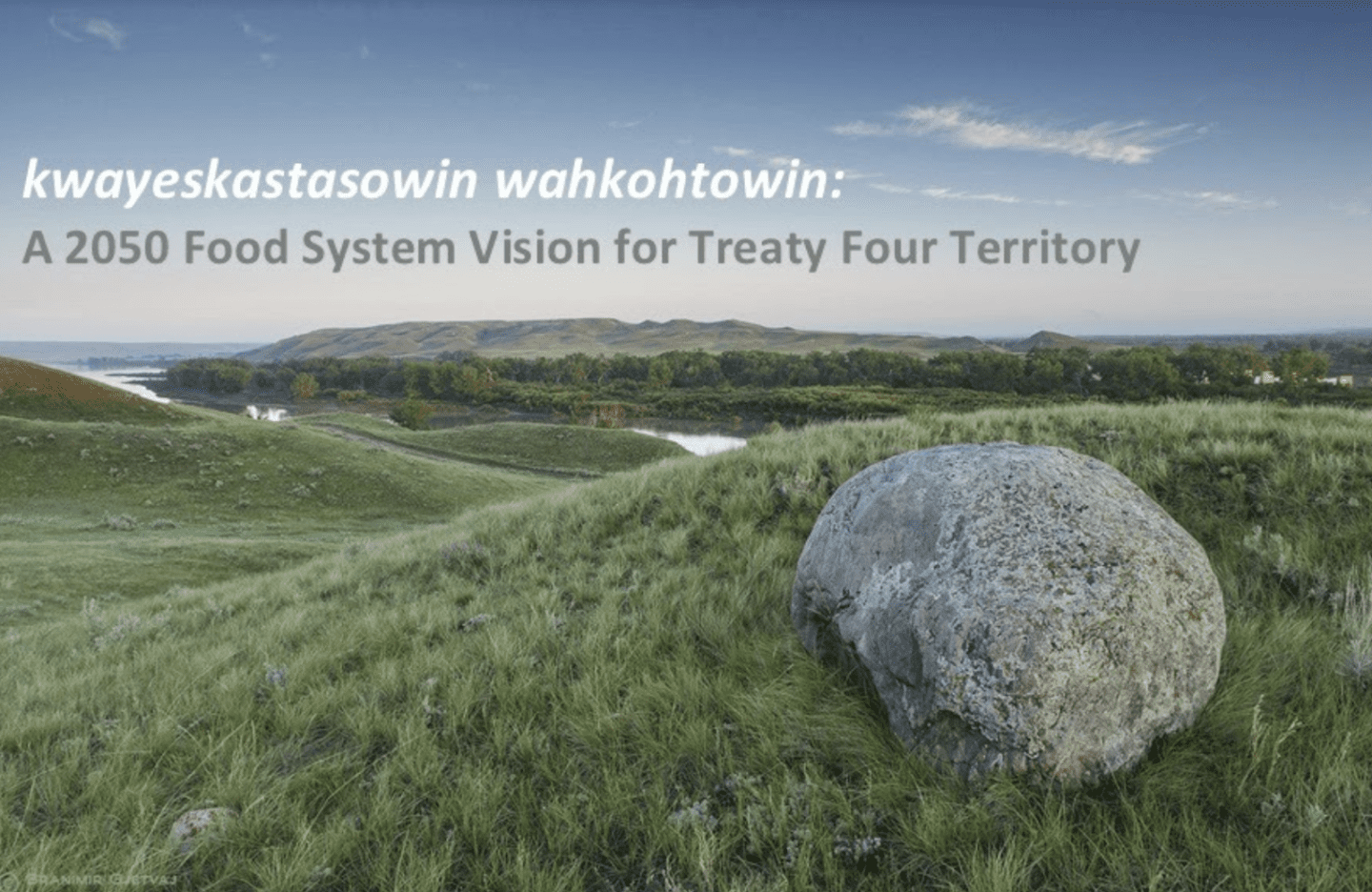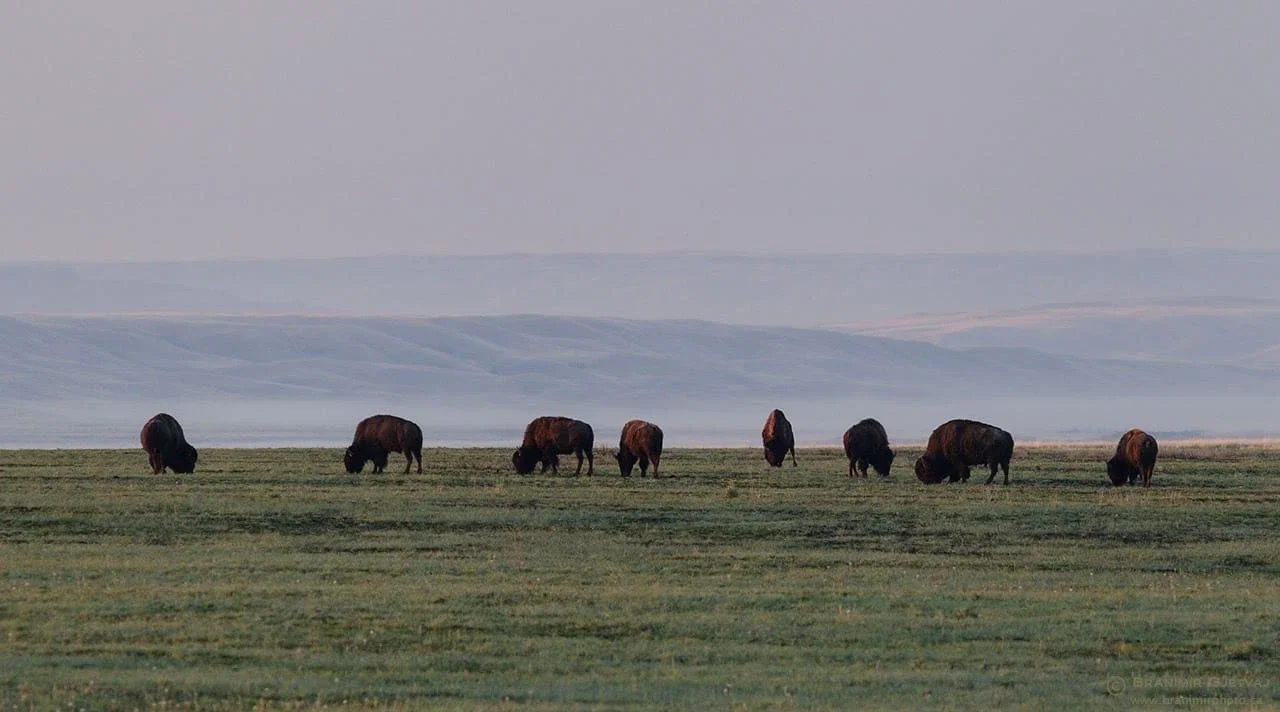The Vision for Canada’s Treaty Four Territory depicts a transformed food system that has been integrated with the process of decolonization and reconciliation between Indigenous and settler populations.
The Vision addresses the interconnected nature of relationships among people and natural systems. In no small feat, the Vision also seeks to fight racism, the prevailing colonial narrative, and the colonial undertone of people dominating nature, with the recognition that transformation and renewal need to take place on every level of society to make things right (kwayeskastasowin) and acknowledge that everyone and everything is related (wahkohtowin).
Treaty Four Territory, set in the southern Canadian Prairie Provinces, is home to approximately 500,000 people, of which around 15% are Indigenous. Thirty-five First Nation reserves are located in Treaty Four Territory. While the population was historically rural, a steady increase in farm size and mechanization has meant that many towns and villages have disappeared.
In the 1870s, to efficiently produce and export grain for the global market, Canada’s colonial authorities remade the prairies in Treaty Four Territory to reflect an industrial mode of production. Despite entering into treaties with the Indigenous nations who occupied the lands, the Canadian government pursued policies to eliminate Indigenous peoples and their cultures. The ripple effects on both the land and the community are still felt to this day.
The climate also poses a challenge: severe winters reach below -40 degrees Celsius and the frost-free growing season is limited to 120 days. With annual precipitation ranging between 14-21 inches, the landscape is prone to both drought and flooding.
The Vision for 2050 focuses on restoring an equitable relationship between Indigenous people and settler populations through a deeper recognition of treaty rights, including a wider sharing and access to lands and resources; adopting a new system of measuring individual well-being and community progress; and adopting policies for watershed restoration and to conserve existing native grasslands, natural tree cover, and wetlands.
Treaty Four Territory Vision showcases how by the year 2050:
- Local and regional production provides 85% of food, while a regenerative approach to farming rehabilitates the soil to yield nutritious crops.
- Protected and restored grassland, aspen parkland ecosystems, and wetlands now comprise 50% of the landscape. Biodiverse species are thriving. The controlled reintroduction of the plains bison has been a key to grassland restoration.
- The vast conservation lands allow for resumption of the Indigenous economy and culture, including traditional food and medicines.
- The rural community is thriving, with new jobs in farming, conservation, energy production, tourism, and food processing.
- Health care costs have been substantially reduced, and mental health has improved through the adoption of healthier diets and lifestyles, as well as a closer connection to the land.
- Indigenous people are spiritually, culturally, and economically emancipated and are enjoying renewed physical and mental health.
This Vision changes the future of food for Treaty Four Territory and offers a space where healing of the past can take place among the people and with the land.

The kwayeskastasowin wahkohtowin team is spread across the prairie region, inside and outside of Treaty Four Territory. The team is associated with the Natural Systems Agriculture Laboratory at the University of Manitoba, and it works in partnership with faculty members of the Universities of Saskatchewan, Manitoba, and Alberta; with Indigenous partners and governments; and with members and staff of the National Farmers Union and Sask Organics.
Click here to explore the full Vision for Treaty Four Territory, Canada in the year 2050.
Our Vision is unapologetically bold and audacious. We envision Indigenous people, settlers, and new immigrants working together to transform prairie culture and to establish food sovereignty while conserving and restoring prairie ecosystems.
